It starts May 12, and ends Oct 17. Let's see what you got!
https://polycount.com/discussion/237047/the-brawl²-tournament
WildStar, Behind the Scenes
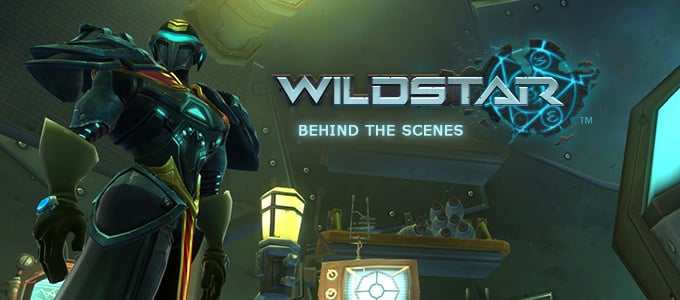
Here at Polycount, we're always on the lookout for awesomesauce to share with you. And man oh man do we have some sweet exclusive screens and hot juicy giblets to share with y'all today.
The team at Carbine Studios is hard at work on their gorgeous new painterly MMO WildStar. I got to dig in deep with their Creative Director Matt Mocarski, to find out just how they managed to breathe so much awesome into this game...
Polycount: What was the genesis of Carbine Studios? What did the team work on before? And how big is the art team now?
Matt Mocarski: Carbine was founded by a group of around 20 people who worked on the original World of Warcraft Team. It was mostly Seniors and Leads. After shipping WoW, a bunch of us were asking “what’s next?” Creatively, we were looking for something new.
The Art Team is around 60 people now. It sounds like a lot but that covers the 12 sub-teams responsible for every aspect of development and marketing: Animation, Effects, Character, Prop, World, Environment, Cinematics, Concept, Illustration, Structure, UI, and Tech Art. Yeah, it’s a big game!
How was the WildStar art style developed, what sources were the most influential?
We explored roughly 2-3 styles before we hit one that clicked. For a time the game was much more realistic. During these phases, the team kept getting excited by the assets that had more style and personality. That’s really what led us to make our choice about the visual style. It’s important that the team is excited and passionate about what they are working on. So we focused on that.
Artistically we were influenced heavily by animation and comics. We didn’t blatantly try to match a style from something specific. Instead it was an amalgamation of influences that were then translated by our Concept Lead, Cory Loftis. Cory had a huge part in helping define our core style. You can definitely see the influence when you look at his work. He’s at Disney now, but his work still influences what we do.
How do you keep the art team all on the same page? Do you use an Art Bible? What can you tell us about your crit/review process?
Early in development we had one rule “match the concept.” We concepted nearly every asset and made sure that everything, from the shapes and silhouettes to the brush strokes in the textures, were being replicated.
We also have a fairly rigorous testing process. We test people with actual concepts for our game. The people that nail a 3D asset closest are usually the people that land the job. So even before they start, our artists know what the goals are. Now that we have so many people trained up, the team understands the style and helps teach it to the new people.
To help maintain quality and style, the Leads and I review every new asset in the game in a weekly review meeting. We review everything, even assets that are WIP (work in progress). It’s important to catch mistakes as early in the process as possible so you minimize the amount of rework the artists need to do. It’s a huge effort and takes about 4 hours a week.
We also do a tons of walk-arounds and sub-team critiques. We really push our artists and it’s created this great environment where everyone cares about the work they do no matter how small the asset.
 https://www.youtube.com/watch?v=ul4qcdpeRZ8
https://www.youtube.com/watch?v=ul4qcdpeRZ8
We see you're using XSI, how did you come to choose it as your main 3D software?
The initial decision was made before I came on board, but if I remember correctly XSI had some amazing animation transfer tools that we felt could really save us a lot of time down the road. Funny enough, I was pretty outspoken against it at first, I was coming off using Maya and loved it.
Back then XSI had a lot of issues with UV features and there were very few studios using it. Since then, there have been a ton of improvements and we do a lot of tool development in-house that has helped out our work-flow.
Your engine is homegrown, right? Can you talk about its strengths, and what kind of artist tools you have?
Our Engine and tools are all proprietary. For MMOs, there aren’t any great “go-to” engines out there. These are huge, seamless, persistent worlds with thousands of players running around. I imagine it would be difficult to market an engine that could do that and everything needed for an FPS and Action/Adventure game. So the best thing about our engine is that it’s, first and foremost, designed for a large scale MMO.
The other great thing about it is it was developed along the same time as we established the art style. So we were able to request tool features that gave us a ton of artistic freedom. For example, we can paint color on the terrain, we can also color tint assets based off their material type. So if we want red leaves on a tree instead of green, we can just tint the color or the leaves without affecting the trunk.
There are hundreds of tiny things we control. We made sure every graphical feature enhanced and preserved the game’s art style. Having the engineers in-house, developing their tools with the same goals in mind was essential in pulling off the style.
(continued on page 2)
(continued from page 1)
How about character design... what kinds of decisions are you making about the shape language, silhouettes, and race differentiation?
We always try to make sure our characters and creatures have strong silhouettes. It is important for us that the player can recognize these from afar. Subtle differences don't pop as much, so we push things as far as we can.
Usually if we are designing a group of enemies, we'll break it down into shapes and sizes. Obviously certain body types are going to communicate specific things to a player. Bigger guys will usually have more hit points and be melee while smaller guys might have a higher DPS. Even though we like to mix it up sometimes, we usually stick to archetypes so the player can make strategic decisions going into a fight.
We have shape and style guides for each of our races (both player controlled and NPCs). We use these to both establish a strong visual theme and to help differentiate our groups from one another. Since we have so many creatures and races in WildStar, we can't really use shapes to define a level of aggression. Eventually you'll most likely fight everything in one situation or another. So our shapes say more about the cultures of our characters. We use shape guides heavily in zones as well.
As far as race differentiation goes, our primary goal was to give something for everyone. So first we defined our player types. Once we had those nailed, we brainstormed ideas we thought were original, visually interesting, and just plain cool. Like the Mechari. I think someone yelled out "Robots!" in one of our meetings and everyone knew it would be a hit.
Because we are a new IP, the sky was the limit; but the most important part was that each was unique from one another. Another important aspect was that someone in the office had to love it. If no one wanted to pick it as the first race they would play, we went back to the drawing board. A lot of those rejected ideas became NPC races in the game.
Can you talk a little about the texturing process? Sculpting, normal mapping, specular mapping, material definition...
We have a lot of different processes for texturing. It all depends on the type of asset we are making. Some assets are unique and small enough to only require 1 or 2 texture sheets. In those cases, we usually do a rough low poly sculpt to get size and proportions correct, then we do a high poly and bake out the normal. After that we'll hand-paint a diffuse, and then use that as a base for our spec.
We also have our own custom material shaders. Each one is hand tailored to fit with the stylization of the game. Our techniques change with larger assets that require tiling textures, but our general processes are pretty standard to the industry.
What is unique about our texturing is the style guidelines we use. We only use normals for overall shape and large details. Medium details and patterning are put into the diffuse. While spec is primarily micro detail and surface material. If we put too much detail into the Normal we lose the stylized look pretty quickly.
It’s all about making sure everything is working in harmony and each map has its own purpose. If you keep highlights in your spec that are also getting caught by the normal your asset can get blown out.
What kind of lighting system is there? Does the game have day/night cycles? How do you balance painted-in lighting vs. dynamic lights?
Every scene has a sky file that is generating the primary lighting of a given area. We define one light to cast shadows and a ton of bounce, fills, ambient, etc., to get the look and feel we want to achieve. We balance that with fog levels so everything is working in harmony.
Most of this lighting is baked into the world, but we have real-time shadows within a certain distance of the camera. Although we have a day night cycle, we only have one angle for the sun. Most people don't notice that much and it was a sacrifice we had to make early on.
On top of that lighting environment, we add what we call "point lights" to the scene. These are real-time dynamic lights and will also affect the player's shadow. These lights can be animated and also have day/night sequences that add a unique look to our time of day. So, lights and plants actually light up at night, or we can artificially brighten an area to draw the player's eye at certain times of day.
We try not to paint too much lighting info into the assets, we definitely use color and value differences to make them look more interesting but this tends to be more ambient occlusion than direct lighting.
It's important that our scene lighting sets the mood and our assets don't compete with it. Though because we do have shadows, our assets can flatten out a little in extreme cases, so the lighting in the textures can help it from looking too flat.
The colors in the game are very vibrant and clean. What are some of your key color decisions, how are you creating environment palettes?
Well, first off, we want a game world that is beautiful and colorful because we want Nexus to be a place that people want to explore, live and in general spend a good deal of their precious spare time in.
Again, variety is the key, so when mapping and brainstorming the environments in the game, we ran through the color wheel: blues, purples, oranges, greens, etc. Then we broke those into environment types.
Once we have our base zone color, we expand the palette into complementary and accent colors, subzone themes, and time of day palettes. We want to make sure each area is as unique as possible and offers the player a new experience while hitting on the major themes and story points of the game.
So usually when we add a new zone, we'll look either at what we are missing, or where the player is coming from. If the players just spent a few hours in a cool, blue area, we will try to use a warmer palette to give them something new.
Sometimes the palette is dictated by the story. If we need to pull off a certain mood, we will alter our color palette to suit our needs. We try not to get too bogged down with what is logical or natural in the real world. We use a lot of techniques found in film and animation to manipulate the player's experience.
(continued on page 3)
(continued from page 2)
We're curious about performance issues, since everyone has to deal with it at some point. What limits are there on the art, and how does that influence the art process?
Performance is a tricky thing, especially when you are developing for the PC. With consoles, you know what kind of hardware your player base has, it's very black and white.
With PCs, you look at the data and try to hit certain targets. Ideally everyone would have the latest and greatest video cards that would make our jobs a lot easier. But you really have to make your best estimates, targeting a mid and min spec as early as possible.
Because of this, there aren't that many hard and fast rules. It's more about offering different options for players with different hardware.
For example we have models that draw over the terrain we call "clutter". This gives the effect that there are blades of grass and natural plants growing over the entire surface of the ground. If you have an uber rig, you can push out the clutter to the extents of your draw distance, if not you might need to pull it in. Some may have to turn it off entirely.
The issue is that you can't just say no to the advanced, expensive features; especially if you want your game to have a long shelf life. You also can't develop something that only looks great on machines that will be common place 5 years after launch. It's a difficult balance.
This influences the art in a lot of ways. The first thing is that we make sure the art is strong and not completely reliant on the tech. Good silhouettes and color, composition, etc... Nothing is going to make that better. So making strong art decisions is key.
Second is to plan ahead. We make sure we develop assets with future technology in mind. For example, one day we want real time ambient occlusion. So if we bake it into all of our assets today, we'll have to go back and lighten it or take it out. So we paint in a light layer of AO into our assets knowing if we get another layer when we get the real time stuff, it will end up looking pretty good without much rework.
Same goes with having normal maps. Maybe one day, normals will be replaced by displacement maps. If that happens, we should still be able to use the information in the normals to generate these. We talk about this all of the time and we make the best choices we can so we don't get caught with our pants down.
Speaking of pants, how many Tech Artists do you have, and what kinds of roles do they fill?
We have roughly 6 tech artists. 3 are dedicated to rigging and animation, 2 are tools and features, and we have a lead that bounces between them all. They all work closely with our graphics and tool engineers to provide everything we need.
Our tools are extremely user friendly and robust so we don't need a dedicated guy for shaders or other features. We have artists that are in charge of creating what we need in the game.
All of our artists are pretty technical. In this day and age 3D guys should know and understand a little of everything. More and more our assets are going to become more procedural, relying on advanced lighting and shader systems more than hand painted textures. It's important to stay on top of the game.
The animation style is really cool. Animation inspiration?
We reference a ton of traditional animation. Disney and Bluth. A lot of Pixar and DreamWorks stuff too. With games it definitely falls between Jak and Daxter and Ratchet and Clank. We want our characters to live and be expressive with huge personalities.
Most of our animators are traditionally trained. So you see a lot of pose to pose and squash and stretch in our work. I think studio wide we have a love for traditional animated features. We pull a lot of our philosophies from that medium that goes beyond animation and into prop, character and environment design.
Is any of the secondary animation simulated dynamically? Long hair, tails, flags, etc. Or is it all keyframed? How do you handle animation transitions?
Most of it is keyframed. We tried some simulated techniques and physics based stuff but it never looked right. Our animators insisted it be keyframed, even at the expense of their own time and sanity!
For some of our environmental stuff we'll rig it to utilize our wind system, so a lot of our flags and plants are more dynamic. Some flags need a little boost so we'll mix the two.
With transitions we'll either blend between start and end frames or if that isn't working we'll ask the engineers to add a blend state that we keyframe.
 https://www.youtube.com/watch?v=-qo5nrkYYI0
https://www.youtube.com/watch?v=-qo5nrkYYI0
Our animators really push their craft. They always go the extra mile. It's all about making that tactile feel of controlling the character a pleasant experience. That Joy of Movement stuff is really important and often overlooked in an MMO.
When you jump in our game, it feels snappy. Again, it's all about making the player's experience an enjoyable one, not just honing our craft.
How did you approach your player-character customization system?
The most important aspect of customization is giving the player the freedom to express themselves. That can be tricky when, at the same time, you are trying to preserve the game style and quality. If you give them the means, players will make the most god awful characters.
There is also an expectation of a certain number of customization options. Too little and people will feel like something I missing. So you have to look at the landscape of what everyone else is doing and see how that fits within your vision.
We definitely have the basics: face and hair styles, hair and skin colors, etc.. Then we try to add in something unique to each race. Ear types for Aurin, horns for Draken, robo-parts for Mechari - this gives everyone a signature set to play around with.
For advanced customization we offer bone sliders. One of the things we did differently is give a set of faces with unique features for the player to start with. Often games will try a one fits all approach when it comes to bone sliders. With our way, we can preserve some of the extremely unique shapes of features like the nose, eyes, and chin then allow the player to adjust them how they see fit.
The best example I have of this are with the Mechari. One of the faces has one eye instead of the traditional two. It would be impossible to make a rig that converts two eyes into one, while maintaining some kind of artistic quality. So the player can pick that face and adjust the size and placement of that eye. This method allowed us to be a little less restrictive with our designs.
Did any Easter eggs slip in? Should we be on the lookout for a greentooth or two (hint, hint)?!
Although I'm sure a lot of stuff has been put in by the team, we try to limit that kind of thing in Wildstar. WoW does a lot of parodies with pop culture and while it's fun and has an audience, we want to challenge our team to make stuff that belongs in our world.
When you add a lot of pop culture references it dates your game. You have to think about people who may be playing 5-10 years from now. Will they get the reference? It’s hard to say.
So usually I like to have the team use recognizable archetypes and make sure they aren't referencing anything too specific. So you probably aren't going to find an X-wing, Malcolm Reynolds, or Greentooth anywhere in our game. Sorry folks! I know it’s a popular thing to do nowadays, but I'd rather make WildStar its own thing and have people reference our game instead!
Like I said, there's probably some stuff snuck in there, it's almost impossible to police every minute detail. So don't call me out if you find a thing or two!
Many many thanks to Matt and the team at Carbine Studios for taking the time to share their workflow and art with us! And a special shout out to Troy Hewitt, Community Director/Producer at Carbine, for helping to make this all happen. ![]()
Hop into our discussion on the forums here!



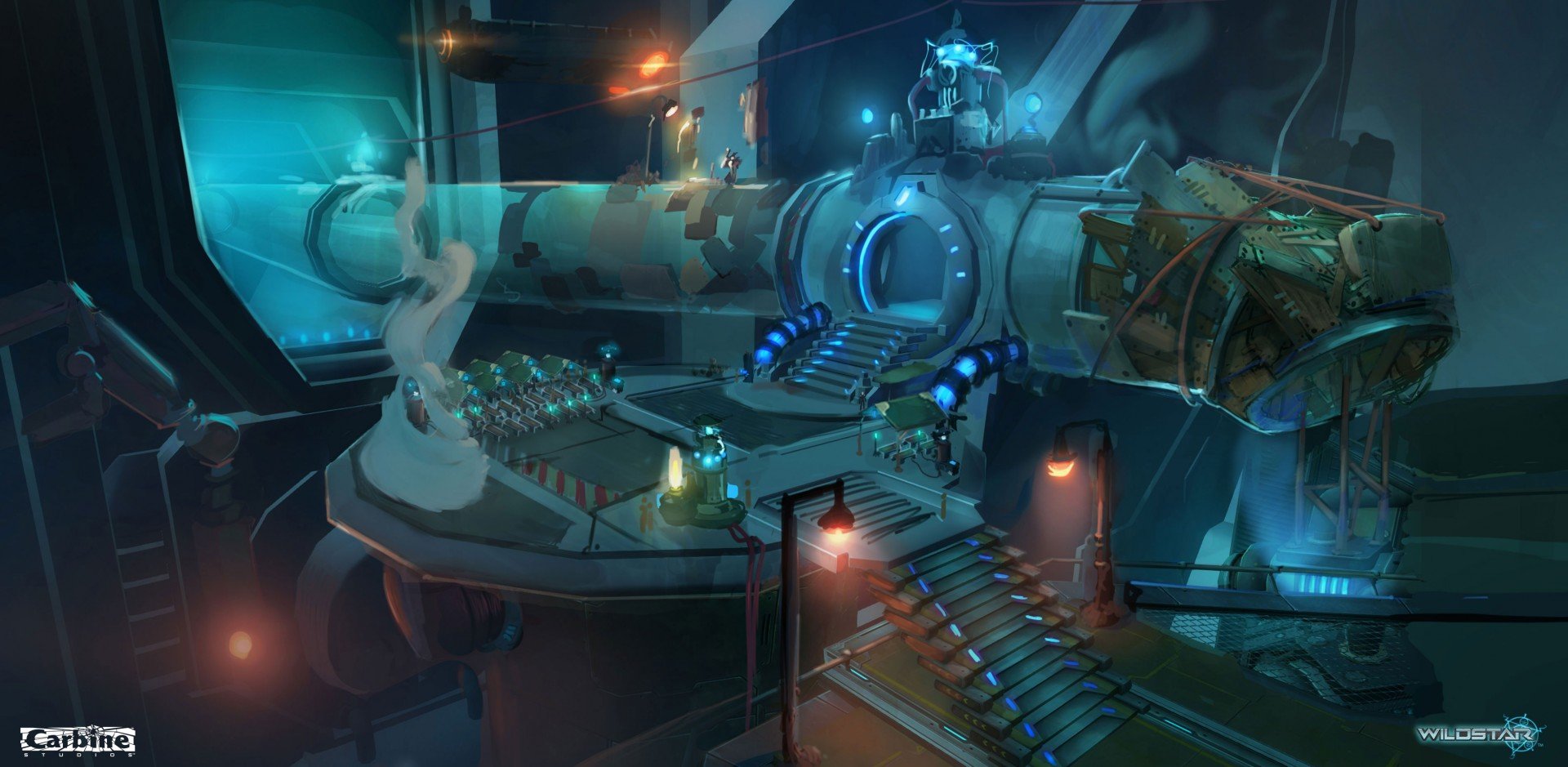



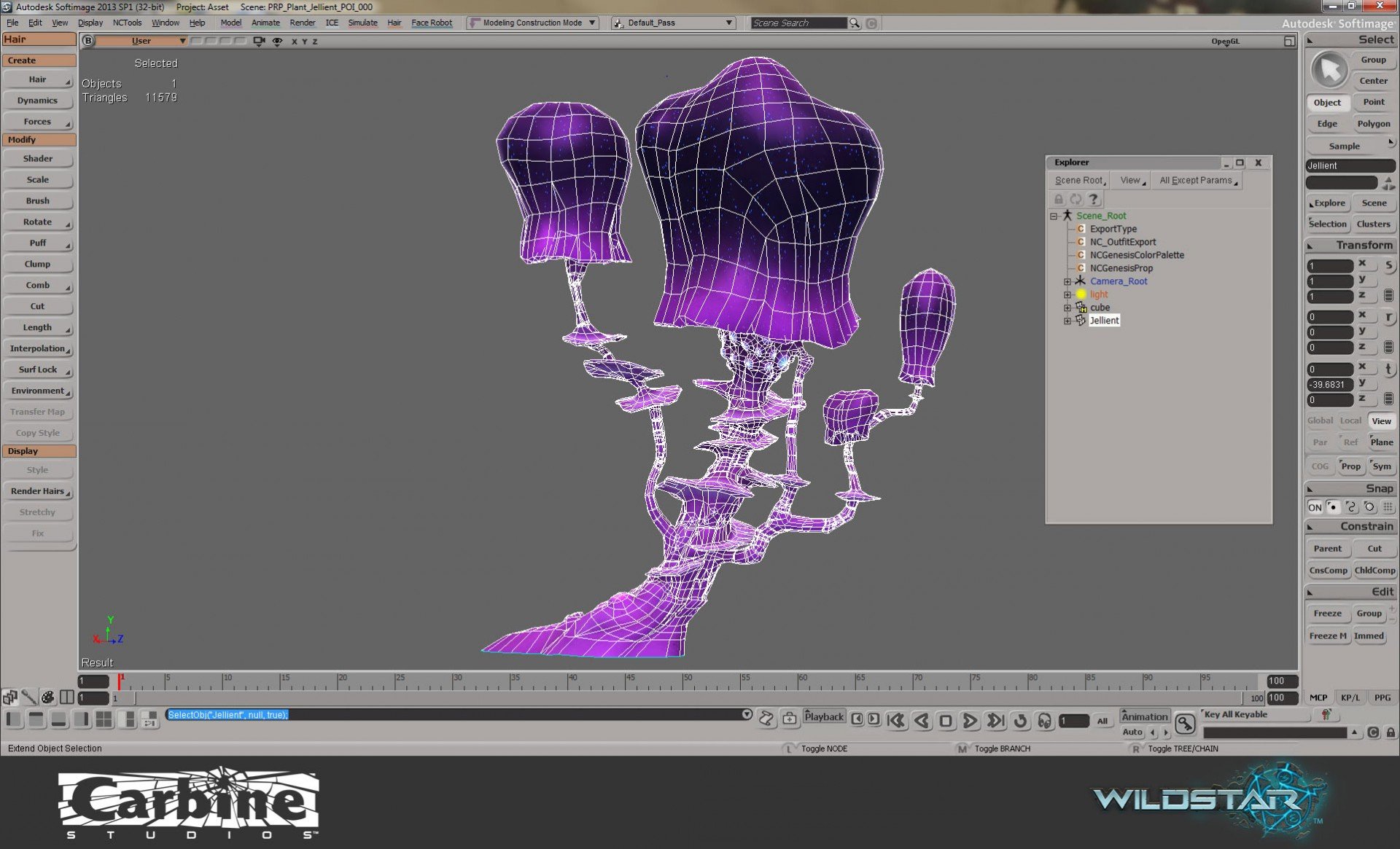
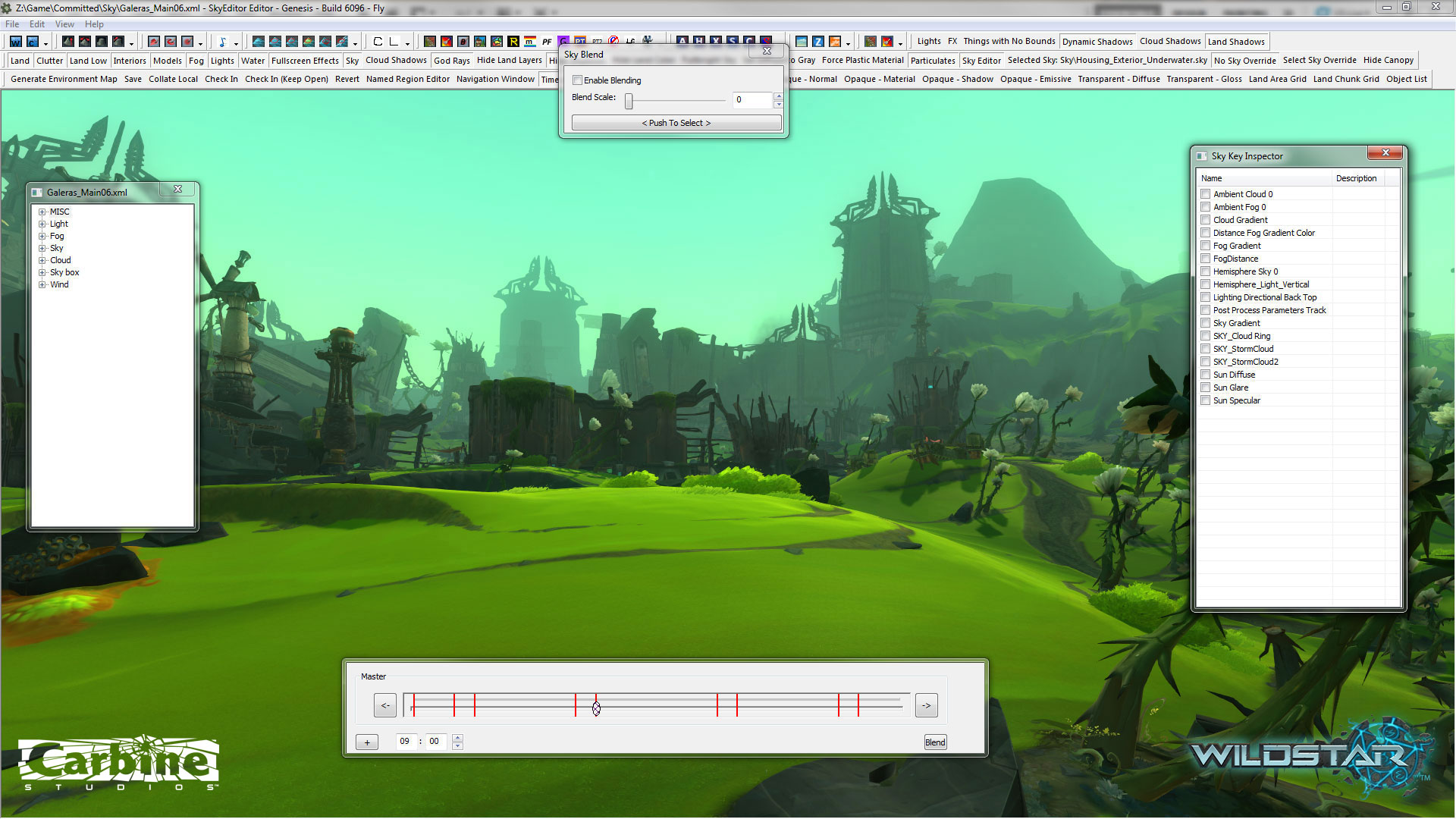




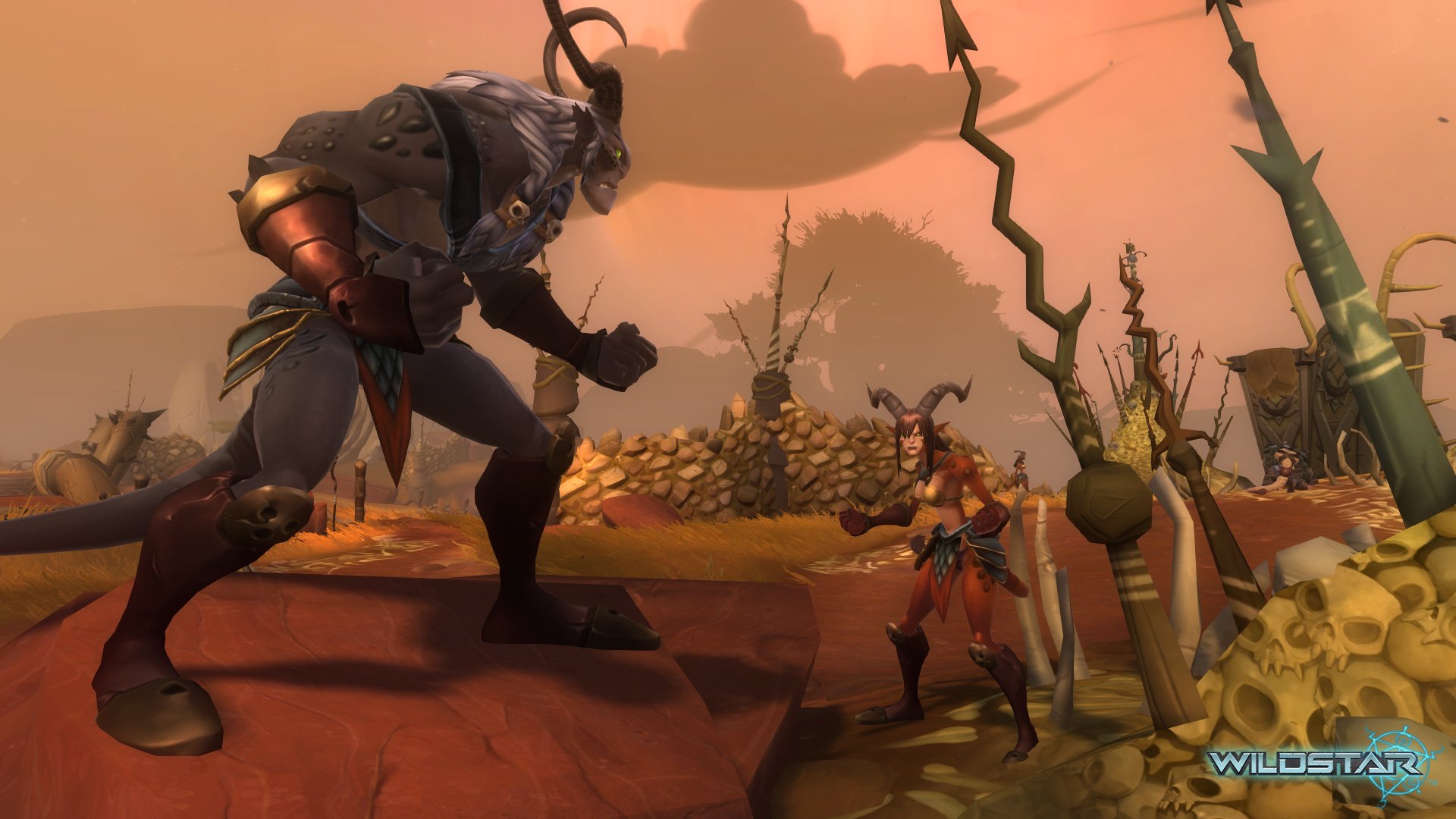

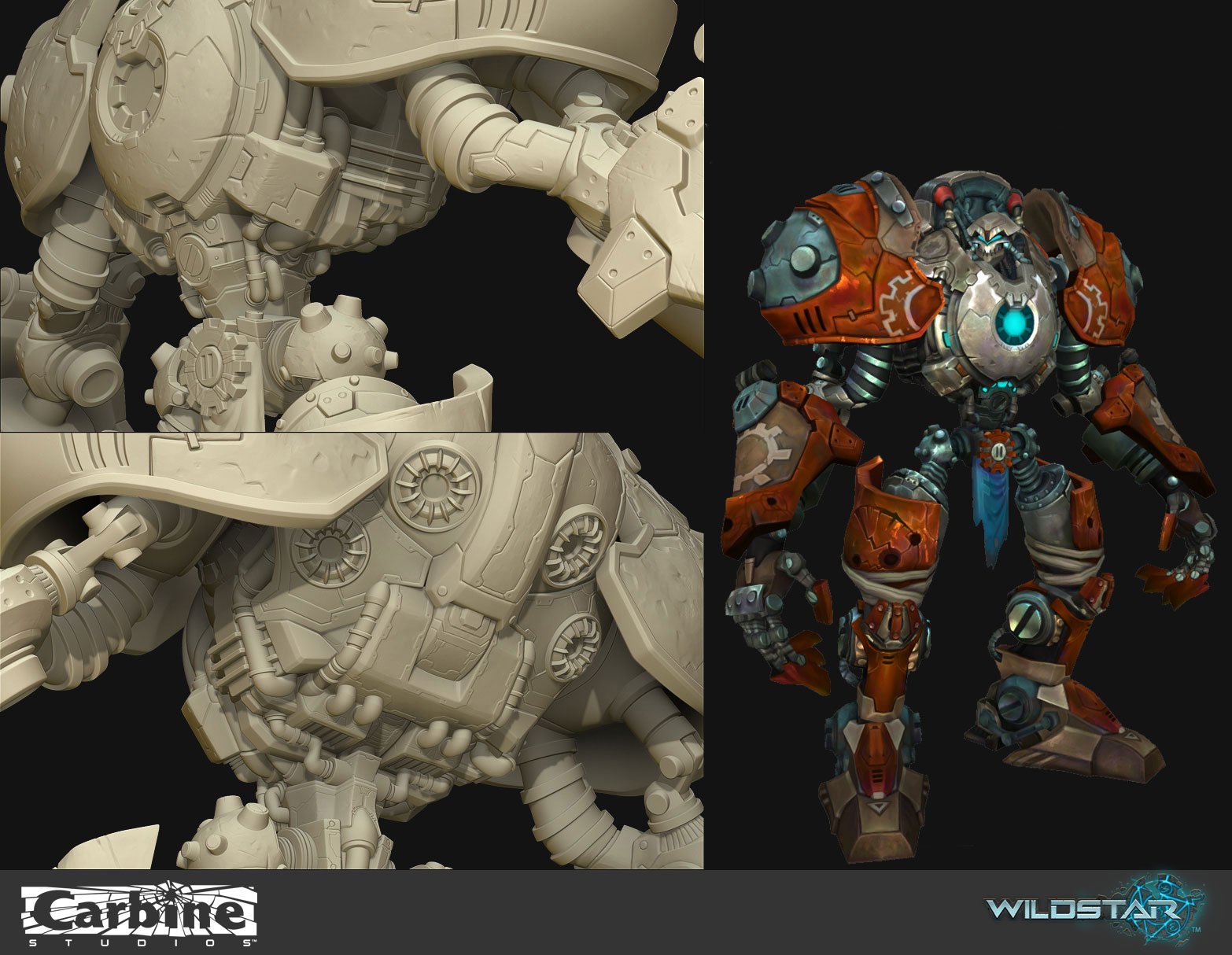




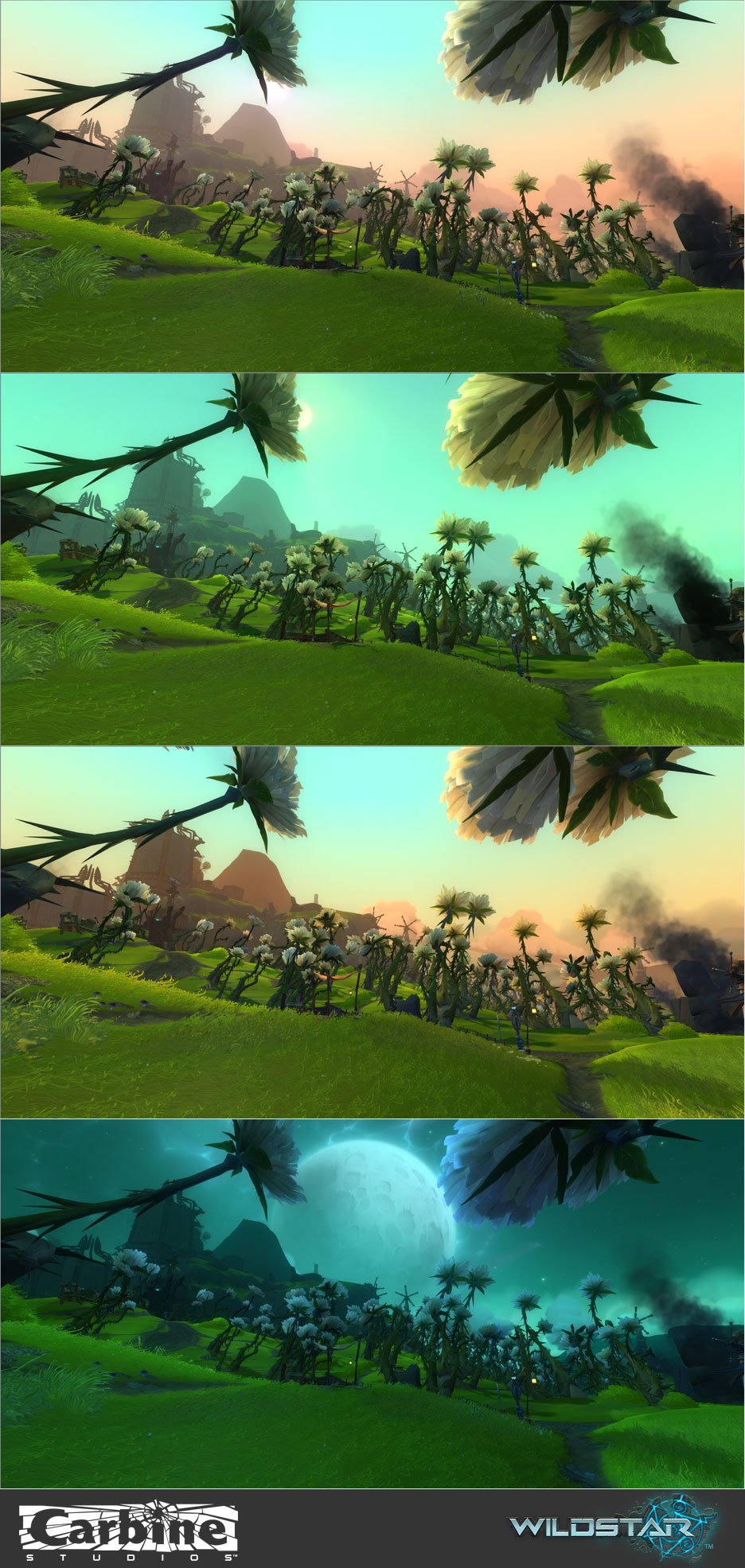














Replies
pleasetakemeilldoanythingO_O
Love the approach and how they handle the artistic tech, would love some insight into the numbers too though, such as how the netcode works but that's for another forum!
Those swords definitely made picking the Warrior class even easier
Now I'll patiently wait and pray for a beta key, good luck Carbine!
http://3.bp.blogspot.com/-w1u2pjOYCxE/UWiDB_EQ3xI/AAAAAAAACxk/b9ea7taCfIQ/s1600/granok_gamemodel_wip_turntable_003.gif
(wtf with those Orb avatars btw >>)